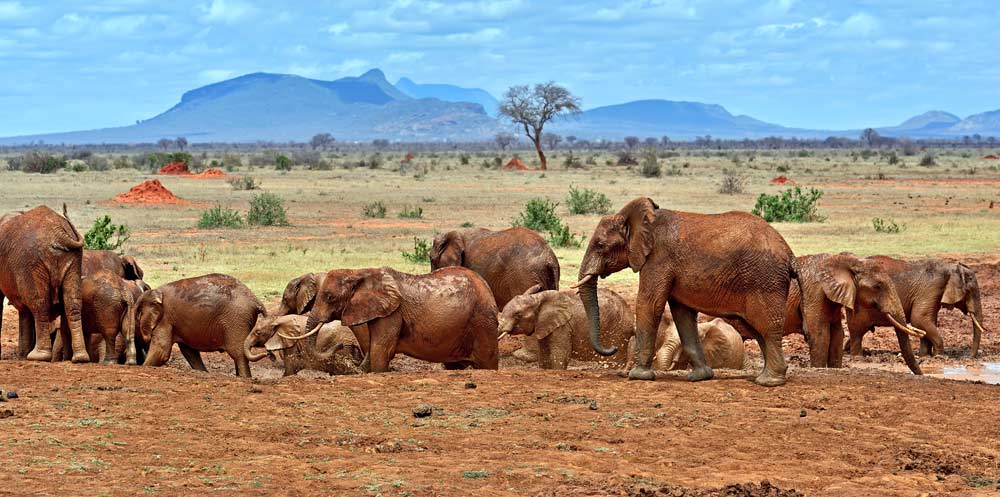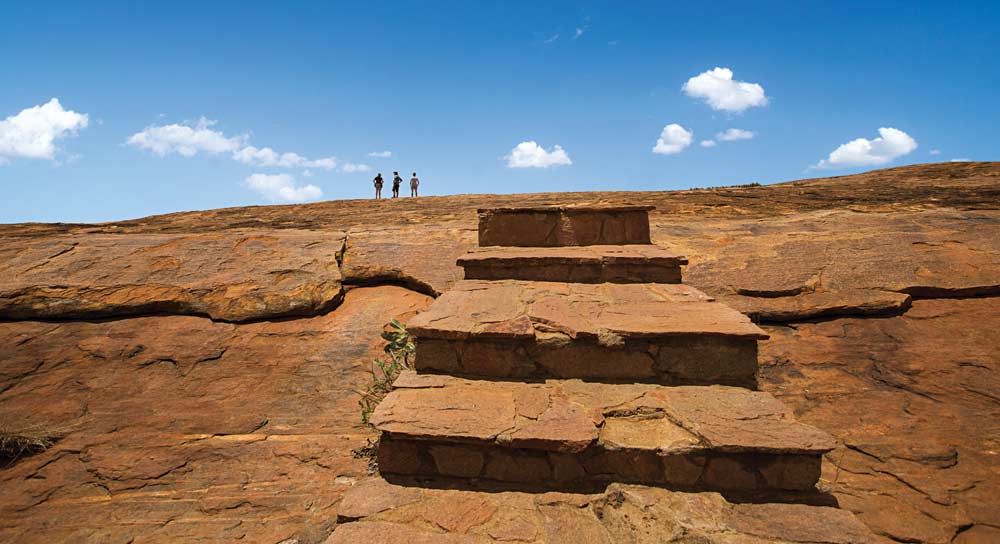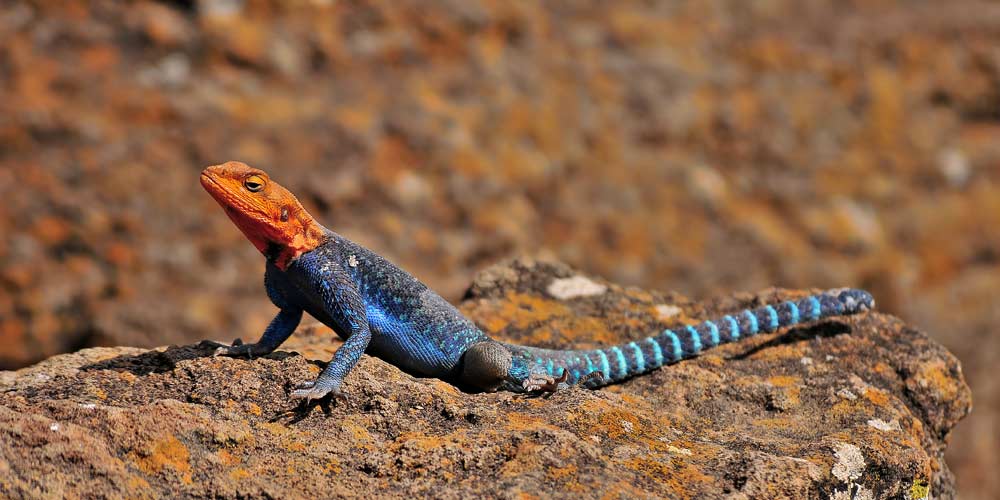In this feature a member of our travel writing team visits Mudanda Rock, Tsavo East. Kenya’s answer to Australia’s Ayers Rock, Mudanda is a place steeped in ancient history. It’s also very popular with the local elephants.

There’s a stunned silence as we arrive at Mudanda Rock. It’s taken us five hours to get here. And we have hardly encountered another human being or seen a single car in all that time. We’ve traversed valleys painted white-over with blossom where the air is laced heavy with scent. And we’ve driven under skies almost blackened by swirling flights of swallows. We’ve encountered great herds of elephant mining for water in the dry riverbeds, lone kongoni perched atop ant hills, drifts of zebra and squabbles of vultures. But not a single sign of civilization.
We’re in Tsavo East National Park, one of the last great tracts of wilderness on earth. Much of it is so wild, so far off the beaten track, that it’s visited only by the rangers of the Kenya Wildlife Service. Closer to the park gates there’s a tiny circuit of roads bustling with tourism vehicles. But we are not on it.

We’re out on a limb, taking a risk: these rusty-red tracks are treacherous. Some are blocked by trees newly felled by elephants, some by vulturine guineafowl, others have been washed away by torrents of water in the recent rains. Others end abruptly in yawning chasms. But we’re in safe hands, our guide knows this area well; he’s checked out the roads in advance. He’s also a happy man. ‘I can’t remember the last time I visited the rock,’ he says, ‘most visitors don’t have the time to get there.’ He turns around to smile at us, ‘most don’t even know it’s there. You’ve given me a real treat,’ he says. His ‘treat’ is Mudanda Rock.
And we’re sitting in silence. Staring at it.
Mudanda Rock is a step back in time
At first glance, it’s underwhelming. A huge whale of pinkish red stone that rises unexpectedly out of the bush with a flight of steps cut into its huge flank. They look like a stairway to the stars. There’s a signboard at the foot of the steps. It tells us that Mudanda Rock is Precambrian basement rock – between 570 and 4,550 million years old; that it’s popular with leopards and elephants; and that thousands of years ago it was used by hunter-gatherers known as the Waliangulu as a place where they dried their elephant meat. ‘That is what ‘Mudanda’ means’ says our guide, ‘the place of dried meat’. We’re mildly diverted, but still underwhelmed. And then we begin to climb the staircase. And everything changes.

Climbing to the top
It’s only when you start to scale the vastness of Mudanda Rock that you realise just how massive it is. Running for 1.5km, it’s like a vast pink runway, a landing strip for the gods. Atop its summit, streaked all the colours of pink and purple, the view over the wilderness is matchless. Here, great natural stone benches rise from the smooth pinkness; some are blood red as though drenched in elephant blood. Time spirals backwards; you can almost sense the presence of the hunter-gatherers.
The hippo pool
On the far side of the rock, the hump metamorphoses into a cliff and drops steeply away into a great pool of water. As we watch, a thin vein of red moves out of the khaki of the bush and makes its way to the water. It’s a herd of elephants. As they near the water, they fan out, each to stake his or her own claim to a particular stretch of water. They’re dwarfed by the immensity of the rock. So are the hippos as they rise to chortle and blow, their little ears spinning like radar dishes.
The residents show up

In the far distance there’s the glint of the Galana River as it snakes along the foot of the Yatta Plateau, the longest lava flow in the world. An agama lizard arrives; his colours flaring orange and blue against the salmon pink of the rock. He’s followed by a troop of baboons. They’re disdainful of us. We don’t belong here and they know it.
As we leave, the elephants arrive
We descend the staircase and regain our vehicle. As we drive away we notice that another herd of elephants has arrived. And with infinite care, one plate-sized foot after another, they’re scaling the rock. The thought comes unbidden: what if they’d met us on top? It’s a thought that must have occurred to many a hunter-gatherer. Many moons ago.
Tsavo East – the facts

Tsavo East National Park (13,747 sq km) is one of Kenya’s oldest and largest parks and lies in a semi-arid area previously known as the Taru Desert. A number of early Stone Age and Middle Stone Age sites have been recorded and there is great evidence of a thriving late Stone Age economy from 6,000 to 1,300 years ago.
© 2025 Kenya Holidays
